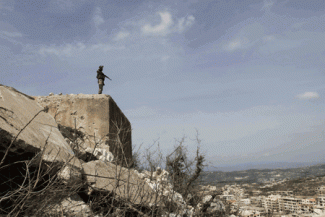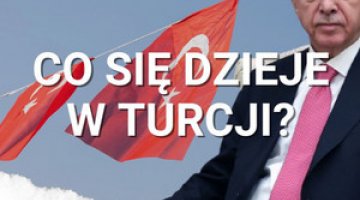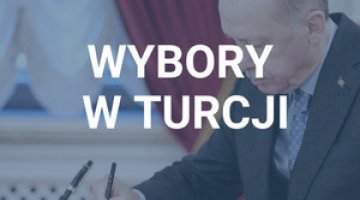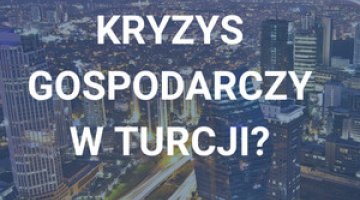Russia and Turkey: leading towards a concert of powers in Syria

On 29th December Russia and Turkey announced a joint plan to introduce a ceasefire in Syria. On 31st December it received support from the UN Security Council. Even though the ceasefire faltered already in the following days, it remains a vital element in the tightening of co-operation between Russia and Turkey in Syria, including in the military area. It also constitutes another step in the effort to push for a new model of the regional order in the Middle East. The plan allows for: avoidance of direct confrontation and an intensification of political co-operation between regional players in order to marginalise the role of the West (mainly the US) in the Syrian conflict. Talks planned for the end of January in Astana about a political settlement of the conflict in Syria will be an important test of the effectiveness of the measures undertaken by Russia, Turkey and Iran.
The ceasefire
The ceasefire announced by Russia and Turkey (one amongst many in the history of the Syrian conflict but the first in this format) allowed for the cessation of fighting in Syria from 30th December. Russia and Turkey were set to act as guarantors of the deal – Russia for the Syrian government (along with all the allied forces, including Hezbollah and units of the Iranian armed forces) and Turkey for the Sunni opposition. The truce directly excluded Islamic State and Jabhat Fateh al-Sham and overlooked the issue of Kurdish forces, i.e. the Democratic Union Party (PYD) and its allies from the Syrian Democratic Forces (SDF). The declaration of joint Russian-Turkish actions to be undertaken to combat terrorist organisations was an essential element of the agreement. This has been manifested by unprecedented Russian-Turkish strikes against the town of al-Bab which is under siege by Turkey and its proxies and is controlled by Islamic State.
In Syria’s short-term internal situation, the ceasefire has limited importance—all the groups engaged in the conflict have continued to fight. It is, however, rather understandable since these forces are fragmented, tactically autonomous and focused on local theatres of war; organisational and ideological divisions within the Sunni opposition are arbitrary and differently defined by the powers. Furthermore, the guarantors of the agreement have rather illusory control over particular fighting groups. This applies mainly to Turkey but also to Russia which, while being undoubtedly the most powerful player in the conflict, does not have control over government forces and their allies, particularly those subordinated indirectly and directly to Iran. The truce not taking effect has been probably factored in from the very beginning in the Russian-Turkish agreement. Its importance stems rather from the political calculations of both parties which regard the joint ceasefire plan as a way of asserting their political domination in Syria.
The issue with Syria – moving towards a regional concert of powers
The civil war in Syria has been ongoing since 2011. Throughout these years neither the internally divided opposition nor the government forces have succeeded in resolving the conflict to their advantage. Political and military solutions championed by the West have failed to yield results (operating in parallel with the US-led coalition alongside the important participation of Persian Gulf states and Turkey). Nor has the proxy war with the key participation of Iran allied to the Syrian government borne fruit. The Russian intervention has also proved ineffective; even though it has made Moscow the main actor in Syria, Russia was still unable to reach a favourable settlement of the conflict.
Russia, Turkey and Iran, rather than being faced with the challenge of ending the war in Syria swiftly, are confronted with the issue of developing a new model of the order in Syria which would regulate relations between them. This model would need to take both their ambitions and limitations into account. It would also be aimed at safeguarding the regional actors against an uncontrolled escalation (e.g. a risk similar to the open conflict between Turkey and Russia following the downing of the Russian warplane in November 2015). The new model should also help develop mechanisms of local co-operation (e.g. in the Syrian-Turkish border area) and make it possible to consolidate the present achievements (to discipline local allies and to eliminate local enemies). This will be necessary before the next stage of the game begins. Russia, Iran and Turkey have a convergent objective – they are all interested in marginalising the role of the US and its ability to influence the political situation in the region, thereby making Washington dependent in its regional policy on decisions made in Moscow, Ankara and Teheran and pushing for equal partner relations with the US.
Given this perspective, Russia and Turkey’s initiative to introduce a ceasefire in Syria is an important pilot project in the process of a fundamental revision of the context of the Syrian civil war. Firstly, the foundations of a new format of conflict resolution, dominated by Russia and Turkey, have been laid out. It encompasses the UN Security Council sanctioned right to arbitrarily use force in the conflict—this is another step in limiting US regional credibility. Secondly, Turkey, which is a NATO member state, one year on from the ‘cold war’ with Russia, has chosen Moscow as its main political and military partner in the Syrian conflict to which it attaches great importance. In the strategic dimension, Moscow has made the greatest achievement. However, Ankara is also increasing its room for manoeuvre in its relations with the US (counteracting the US aid given to Syrian Kurds). Thirdly, Russia and Turkey are defining their ambitions (Moscow is interested in controlling the Syrian government, Ankara willing to control the moderate anti-Assad opposition), common enemies (Islamic State) and controversial issues (the Syrian Kurds are Turkey’s main problem but are a potential ally for Moscow and have been overlooked in the ceasefire agreement).
The truce has confirmed the impression that Russia and Turkey have extended their political patronage to the main parties to the conflict. Indicating both countries as the major regional players is an affront to Arab states in the region and also to Iran. Alongside Russian airstrikes, the actions undertaken by Iran have had a decisive impact on the survival of the Assad regime and the successes of his counter-offensive in recent months. The process will be complemented by talks about the political settlement of the Syrian conflict; these are scheduled for the end of January in Astana and will be held under the auspices of Russia, Turkey and Iran (the latter was absent from the ceasefire plan), with a suggestion that the Syrian actors of the conflict may participate. Russia and Turkey are thus faced with the difficult task of proving the effectiveness of the proposed solutions, and Iran will have to prove it should be involved in the political process due to its role in Syria.
Conclusions and outlook
The vision of a coherent and effective balance of powers (Russia, Turkey and also Iran) is far from being completion. The obstacles to it are objective: the ambitions of the respective countries are huge and contradictory, the level of mutual distrust is high, divergences in addressing selected issues remain fundamental, the range of instruments is limited and the volatility of the situation in the region is high. Future US policy remains, however, one of the largest uncertainties which may bear impact on the development of the situation in Syria. The US has limited its activities in the Middle East due to the presidential campaign and the change in the administration, thus allowing Russia to adopt the key role in the conflict.
Despite the above-mentioned constraints, a growing convergence of the strategies of Russia, Turkey and Iran can be observed. These countries are interested in revising the Middle Eastern order and marginalising the US. The ‘concert of powers’ interpreted as an exclusive regional format set to neutralise tensions between the countries in the name of reconstructing the Middle East seems to be emerging as a new reality.
Krzysztof Strachota
Co-operation: Józef Lang




